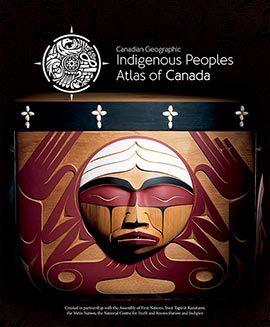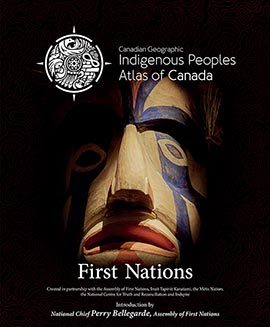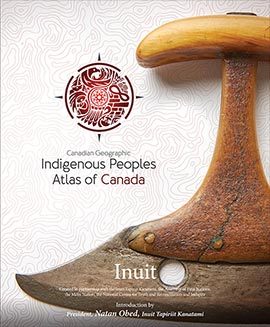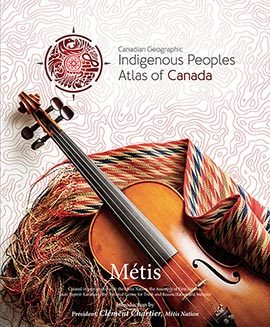“Learning resources on controversial issues should be selected with a focus on maintaining a balanced collection representing various views. Such resources might be chosen, for example, to show the relationship between contemporary issues and past issues, with an emphasis placed on recognizing and understanding social and economic challenges” (ERAC, 2008).
- Analysis and Evaluation of the current reference collection:
Encyclopedias and Atlases
Our Encyclopedia and Atlas section is in need of some attention. This school library with 350 students houses 44 encyclopedias with an average age of 1983. There are only 2 that were published after 2013 and the oldest are from 1952 and 1965. My recommendation would be to discard any encyclopedia from before the year 2000 and purchase new ones.
While some of the encyclopedic information is unchanging and relevant, the cultural and racist omissions of the time need to be remedied. As outlined in Reference Skills for the School Librarian (2013), most print reference material should be replaced every 5 years (Reidling, et al., p.24, 2013). In looking at our available encyclopedias and dictionaries, we are very behind the times in terms of currency.
We especially need to purchase new materials that address the history of Indigenous Peoples in Canada so that we can properly reflect their existence and importance in Canada in our classrooms and represent the B.C. curriculum accurately. According to the Evaluation and selection of learning resources: A Guide (2008), “learning resources should be supportive of continuous learning by the individual and be relevant to the needs of the student” (ERAC, 2008). Learning resources should also, “reflect sensitivity to gender and sexual orientation, the perspective of aboriginal people, and cultural and ethnic heritage” as well as, “promote equality by enhancing students’ understanding of a multicultural and diverse society” (ERAC, 2008).
The recommendation: to add the Canadian Geographic Indigenous Peoples Atlas of Canada to the collection in accordance with theTruth and Reconciliation Commission of Canada: Calls to Action.




We will follow Reidling’s recommended evaluation:
- Content Scope
The content here is not like anything we have available at the moment in our library collection. It is appropriate for gr. 9-12 and would also be a valuable teaching tool for teachers, teaching any grade, as support in their own education.
- Accuracy, Authority, Bias
The atlases were written in partnership with “Assembly of First Nations, Inuit Tapiriit Kanatami, Métis Nation, National Centre for Truth and Reconciliation and Indspir” (Goodreads, 2023).
- Arrangement and Presentation
Colourful images and photography and giant floor maps. 
- Relation to Similar Work
The encyclopedias and atlases that we have are very dated and do not contain detailed information about First Nations communities, history, culture, the legacy of residential schools, climate change, and language. These references will act as complimentary material to Indigenous novel studies (Language) , current affairs (Social Studies) and our relationship with the natural world (Science).
- Timeliness and Permanence
The time is long overdue for us to have this resource available for teachers and students. As history books omitted or ignored much of Canada’s First Nation’s history, this will now be a go-to for educators who are looking for support in their teaching.
- Cost
The cost of the 4 books is $99.99 + shipping. The poster is $6,600 + $300 for shipping. Needless to say, the books are affordable and will serve our purposes. We may even be able to get a set for each classroom. The poster will have to remain on the wish list, unfortunately.
Dictionaries and Thesauri
Our Dictionary and Thesaurus section is in better shape, but still in need of some attention. We currently have 21 dictionaries, but only 3 of them were published in 2000, 2003 and 2014. Most of the books were published in the 1990’s and 19970’s but the oldest one we have was published in 1952 and that brings our average age to 1983. My recommendation would be to cull all of the dictionaries from before the year 2000 and replace them with new print and electronic versions.
It is important that our library have dictionaries, thesauri, encyclopedias, almanacs and handbooks available to students in both print and digital forms. As Reidling asserts, “there is such a thing as a division of labour – not only among people, but almost among types of books and reference materials. Sometimes a dictionary or encyclopedia is precisely what is required, regardless of format” (Reidling, p.61, 2013). The vast variety of vetted information that is encapsulated in these reference books will be immensely helpful to student’s in their research and crucial in developing their critical thinking skills. Many of the electronic versions of dictionaries that we may utilize are free for students to access, so it is important that we create awareness for our students of what resources are available to them.
Therefore, we need to update our dictionaries and ensure that we keep updating them often. To keep costs down, I recommend that we only buy 5 at a time but also direct students to our online reference tools as well, so that they can access them at home when completing assignments. Also, we should have print dictionaries for the younger students because, “print materials are used most often in the elementary grades because young children often experience difficulties with managing the more adult-oriented online environment” (Reidling, p. 64, 2013). We will leave the online subscriptions to the older students who are using them for their assignments.
The recommendation: New beautiful, colourful, engaging print dictionaries such as; The Dictionary of Difficult Words (2019) written by Jane Soloman and illustrated by Louise Lockhart, and Oxford Roald Dahl Dictionary (2016) written by Susan Reddie, Roald Dahl and illustrated by Quentin Blake, that was found on a list for 20 Stunning Illustrated Dictionaries.

Dictionaries will be evaluated, for example, following Reidling’s (p. 62, 2013). criteria regarding:
- Authority
It is written with Roald Dahl’s words and by his long-time collaborator, Quentin Blake and is published by the Oxford University Press.
- Format
Big, bright, beautiful illustrations with humorous words and turns-of-phrase. Perfect for a young child with a bright mind and a developing sense of humour.
- Currency
It was published in 2016 which is much more recently than our standard dictionaries from the 1990’s.
- Accuracy
The book claims to have “everyday and extra-usual words” so it is safe to assume there will be some nonsense fun words woven in with the regular words; much like Dahl’s writing.
The recommendation: A subscription to Britannica Kids as there are other online dictionaries that are available, but I would feel more secure with a subscription-based because the other ones can freely advertise to the students when they are using it. The cost is $99/year for a family bundle which means that we could utilize it in many classrooms.
2. Rationale for why the references need to be updated/ how is it affecting student learning:
These references need to be updated because our collection does not currently include recent reference resources and, “it is more important to have a small but relevant and up-to-date collection of materials than a large collection that is neither useful nor of good quality” (Reidling, p. 23, 2013). If the collection is just that, a collection of old, clunky books that do not appeal to today’s students, then it is obsolete.
We must strive to keep our collection useful to our students so that they can see their world (not the world of the 1950’s) in their resources. When the students are engaged in inquiry work, at whatever age, they must have diverse resources that capture various points of worldview. “Maintaining this diverse reference collection is an ongoing process. Regular inventory of the reference collection and review of individual print and electronic resources are required to identify areas that need to be updated or strengthened” (Reidling, p. 24, 2013). Electronic resources are more readily updated, but it is imperative that we have both print and electronic available in the library collection.
Step-by-Step Plan:
How will the change take place?
- We will continue to research the best resources that are available to us and keep to our commitment of upgrading those resources every 5-10 years.
Who will be involved?
- Teacher-Librarians and Teachers for research and recommendations
- Admin, for budgeting and funding
- Parent Association, for budgeting and funding
- Students, for communicating their research and learning needs
A timeline for improvement:
- The weeding of older references will be addressed during the fall of the new school year.
- There will be 2 book fairs; one in October and one in February to build up the library budget for the year.
- Purchasing/ordering can happen once the books fairs are finished in March before Spring Break.
- In April, the new books can be entered into the library system and the classrooms.
How will you communicate the plan?
- Attending the SPG meetings to make sure the library is represented in the strategic planning
- Emails are used to maintain communication with the Admin team
- Once the new books have arrived, they will be posted in the Slack channel for teachers
- A presentation at the staff meeting to introduce the new materials
- A dedicated shelf where we can showcase the bright and beautiful books to attract the student’s attention.
Works Cited
BC Teacher-Librarians’ Association (BCTLA), (2011). The Points of Inquiry: A Framework for Information Literacy and the 21st-Century Learner. https://bctladotca.files.wordpress.com/2018/02/the-points-of-inquiry.pdf
Encyclopædia Britannica, inc. (n.d.). Encyclopædia Britannica. Retrieved April 2, 2023, from https://kids.britannica.com/kids/browse/dictionary
Evaluation and selection of Learning Resources: A Guide. (2008). Retrieved March 28, 2023, from http://www.gov.pe.ca/photos/original/ed_ESLR_08.pdf
Facebook.com/readingmiddlegrade. (2022, October 31). 20 stunning illustrated dictionaries for kids. Reading Middle Grade. Retrieved April 2, 2023, from https://readingmiddlegrade.com/dictionaries-for-kids/
Indigenous peoples atlas of Canada. Indigenous Peoples Atlas of Canada. (n.d.). Retrieved March 28, 2023, from https://indigenouspeoplesatlasofcanada.ca/
Reddie, S., Roald, D. (2016). Oxford Roald Dahl Dictionary: From aardvark to Zozimus, a real dictionary of everyday and extra-usual words. Oxford University Press.
Solomon, J., & Lockhart, L. (2019). The dictionary of difficult words: With more than 400 perplexing words to test your wits! Lincoln Children’s Books.
Truth and reconciliation commission. The Canadian Encyclopedia. (n.d.). Retrieved March 28, 2023, from https://www.thecanadianencyclopedia.ca/en/article/truth-and-reconciliation-commission
Truth and reconciliation commission of Canada: Calls to action. The Canadian Encyclopedia. (n.d.). Retrieved March 28, 2023, from https://www.thecanadianencyclopedia.ca/en/article/truth-and-reconciliation-commission-of-canada-calls-to-action
Riedling, A. (2013). Reference skills for the school library media specialist: Tools and tips, (Third Edition). Linworth.
Hi Lauren
I also found in our LLC that the encyclopedias available were old and boring to be honest. As much as the students enjoy flipping through them, I also want them to be engaged and interested in the encyclopedia itself. Time for upgrades in our LLC for sure. I agree that as TL’s we have a responsibility to make sure that the cultural and racist content of before is a non-issue in the resources that our students use today. Also that we provide ample resources on the Indigenous Peoples in Canada especially. Thank you for pointing out that it is also imperative that we reflect the sensitivity of gender and sexual orientation in the books and resources that we provide to our students and staff. The giant floor map that you found is amazing! Just wish it wasn’t thousands of dollars….maybe one day! The updated dictionaries that you posted about seem really interesting and the Roald Dahl copy would be fun to have in the LLC. It would go quite nicely with a unit on the author himself. I also would like to have more kid friendly dictionaries in the library and so they are also on the list, the very long list or resources I would love to have.